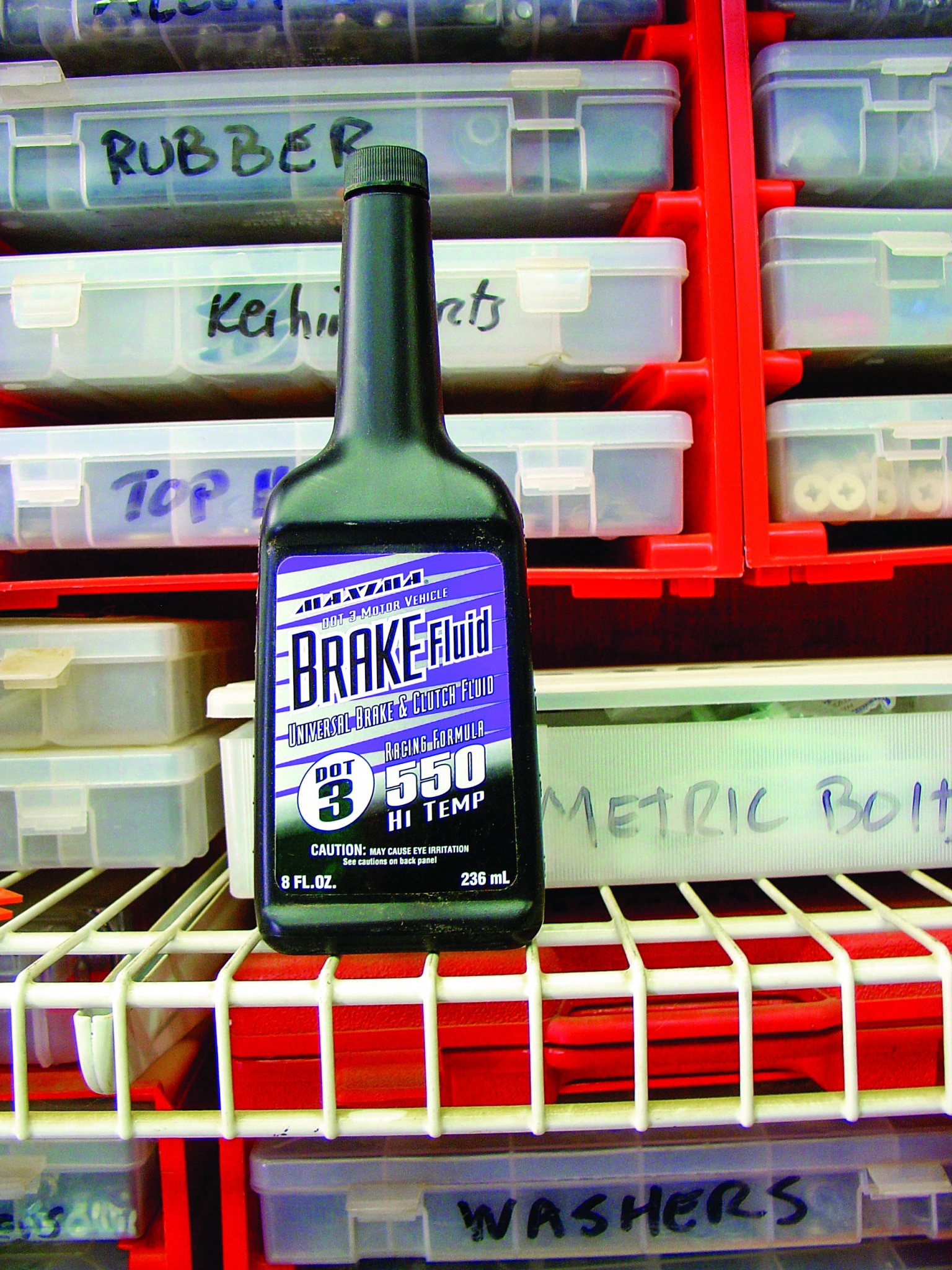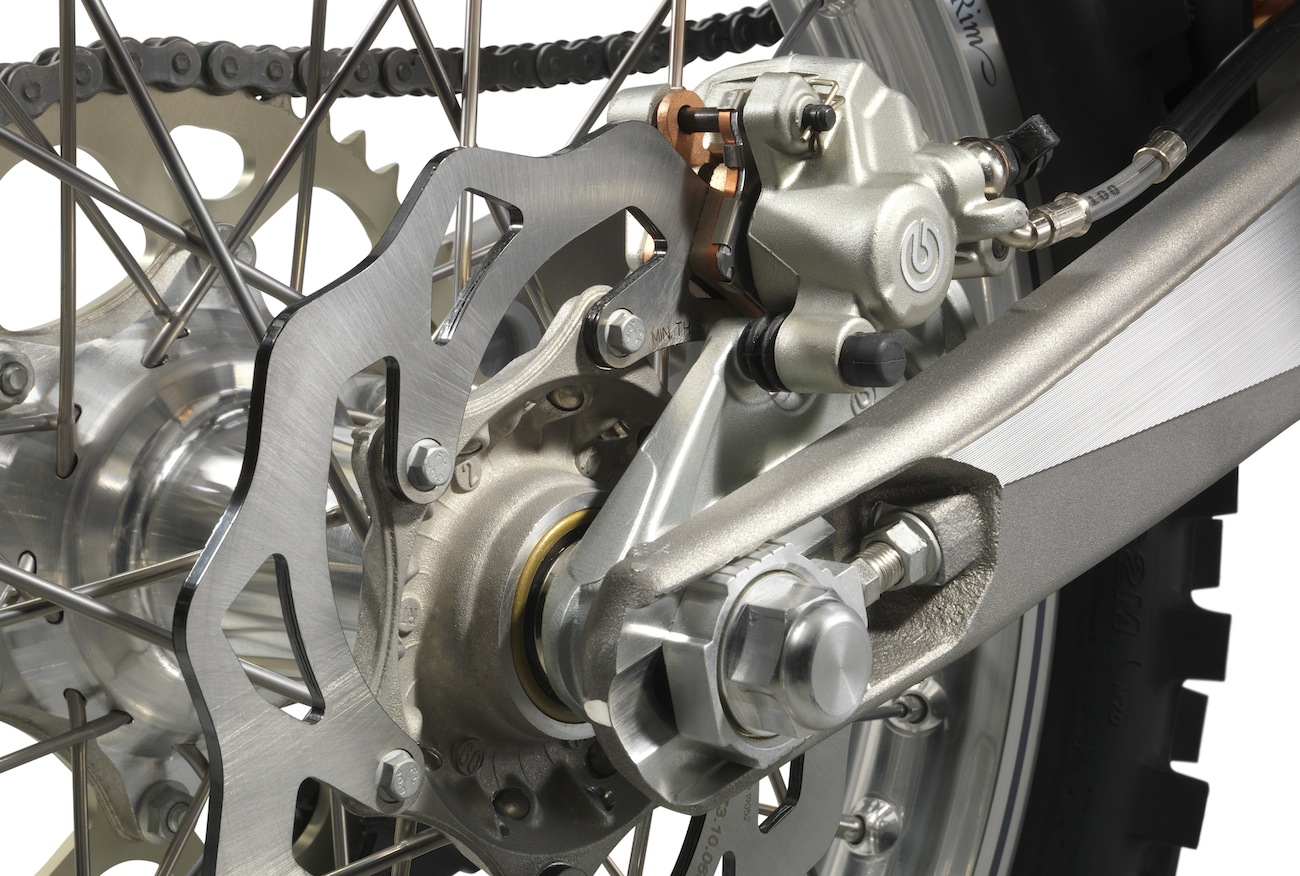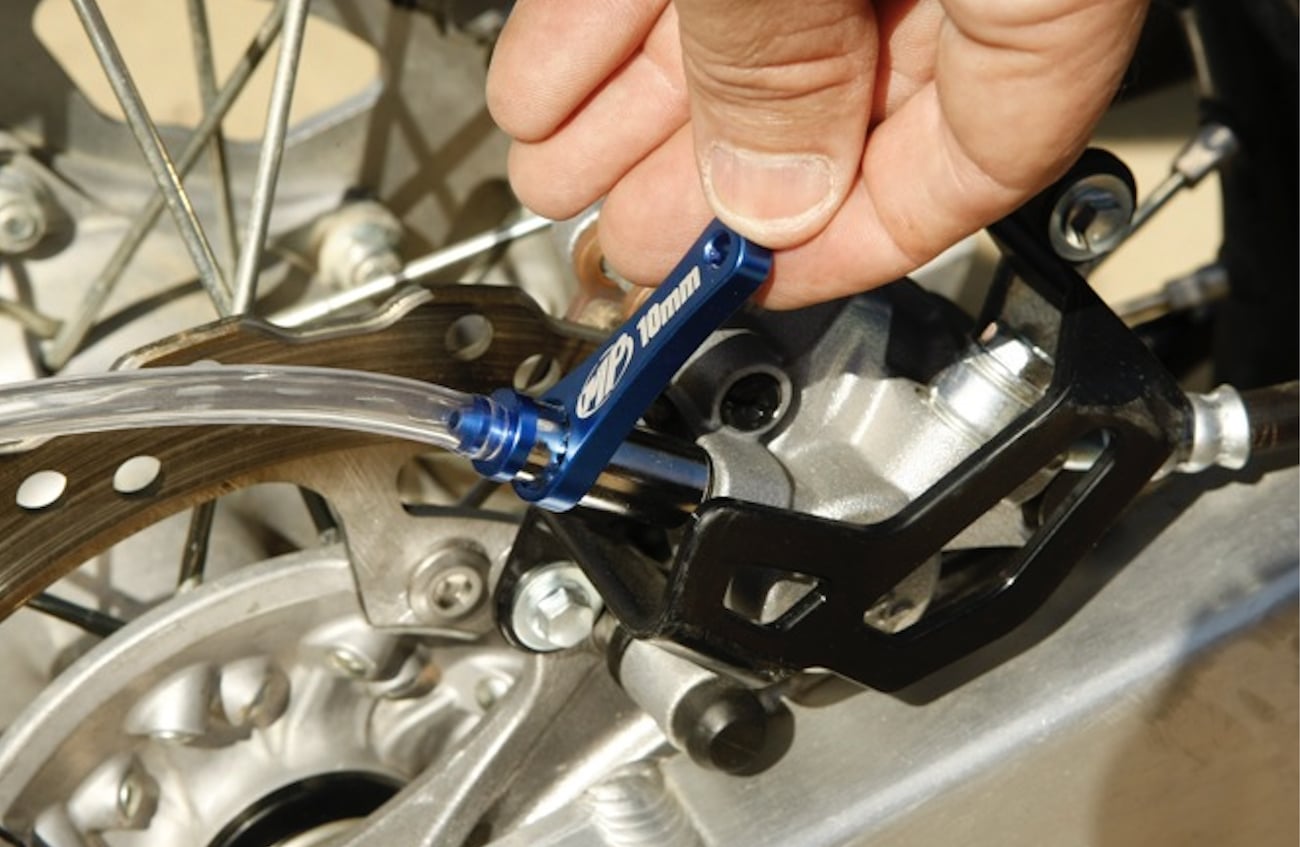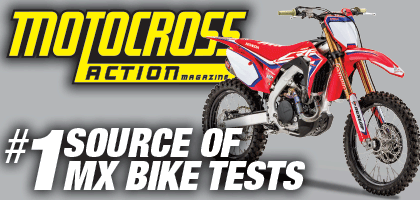MXA TECH SPEC: THE MAGIC ELIXIR INSIDE YOUR BRAKES
Everybody wants to go fast, but it doesn’t mean a hill of beans if you can’t decelerate just as fast. Braking is a science project. When you pull the lever, your bike’s ability to stop depends on the fluid inside the calipers.
Brake fluid is a magic elixir. Brake fluid must be thin enough to respond instantly, compatible with your brake system’s components (plastic, metal and rubber) and able to remain consistent in temperatures that vary from 500 degrees to freezing. Polyglycol fits the brake fluid profile to a T. Unfortunately, glycol, an alcohol derivative, absorbs moisture out of the atmosphere at an alarming rate.
Hydraulic brake systems are sealed, so how does water get in? There are three major culprits: (1) Hydroscopic fluids, like brake fluid, can actually pull moisture past the master cylinder’s diaphragm. (2) Moisture can enter when the reservoir cover is off. (3) The brake fluid can be contaminated with water before you put it in your brakes. Although brake fluid is packaged in a hermetically sealed environment, it’s not a good idea to purchase fluid that has been sitting on the shelf for years. Additionally, you should seal the container immediately after use to keep moisture retention at bay.
Water absorption is a problem, but so is heat. Using a few square inches of brake pad to stop 230 pounds of bike generates heat. How much heat? Up to 500 degrees. This heat is transferred through the brake pads directly to the brake fluid. Brake fluid can boil, and when it boils, it vaporizes into a compressible gas. Under braking, the vaporized gas compresses before the hydraulic fluid and makes your brakes feel mushy.
If you mix the two troublemakers, water and heat, things get worse. When water gets into your brake fluid, it lowers the boiling point and causes the brakes to fade even earlier. This dilemma is often called vapor lock, but a more proper term would be vapor fade, since the gas produced by the boiling brake fluid rarely expands to the point of locking the brakes.
The DOT (Department of Transportation), which regulates brake fluid, has criteria so stringent that only a handful of companies produce brake fluid in the USA (no matter whose name is on the can, the brake fluid most likely comes from Dupont, Dow or Union Carbide). The DOT grades brake fluids by type, boiling point and compatibility. Here are the big players in the brake fluid world.

DOT 3 brake fluid: In almost all cases, DOT 3 is the least expensive and lowest performing brake fluid produced. DOT 3 is compatible with DOT 4 and DOT 5.1 systems and has a wet boiling point of 284 degrees (the higher the wet boiling point, the less susceptible the fluid is to absorbing water).
DOT 4 brake fluid: DOT 4 is compatible with DOT 3 and DOT 5.1 and has a wet boiling point of 311 degrees. Most DOT 3 fluids meet DOT 4 regulations and vice versa.
DOT 5 brake fluid: The higher boiling points of DOT 5 make it look attractive, but, if water or air gets into the system, DOT 5 will get syrupy. DOT 5 is not compatible with DOT 3, DOT 4 or DOT 5.1 systems and has wet boiling point of 500 degrees.
DOT 5.1 brake fluid: DOT 5.1 was designed for the anti-lock braking systems (ABS) on automobiles. DOT 5.1 is the thinnest brake fluid and offers the least hot-to-cold change in viscosity. DOT 5.1 is compatible with DOT 3 and DOT 4 and has a wet boiling point of 356 degrees.
So, what should you use? First and foremost, you should never use DOT 5. Most bikes come off the assembly line with low-cost DOT 3 fluid. After break-in, MXA replaces the stock DOT 3 with new DOT 4 or 5.1 fluid. Warning: mixing new fluids with old fluids lowers the boiling point of the new fluid, so flush the complete system. Although fluids with high wet ratings can run longer before water contamination becomes an issue, it’s never smart to run any fluid longer than six months. DOT 3, 4 or 5.1 fluids all work well. Your usage and standards determine which one is best for your bike.








Comments are closed.